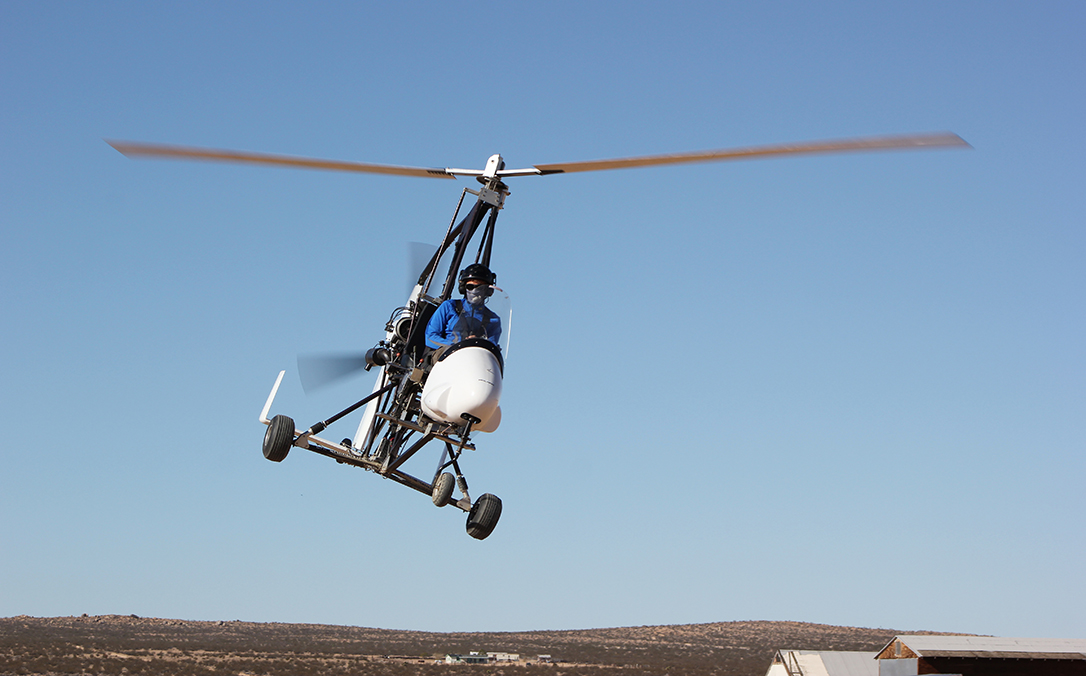
Serial inventor, pilot, airframe builder, rocket scientist and overall Renaissance Man Dezso Molnar thinks your Harley is pretty cool, but if it was a gyrocycle and could fly, it would be cooler. When I hear lofty, out-of-the-left-field statements like that, I generally switch to my dismissive-GTFOH-overtones and advise the daydreamer to stop getting high on Marvel Comics while operating heavy machinery. Except, yes, there are exceptions — and when this particular daydreamer’s past jobs involved building 700-mph rocket cars, fighting robots and his circle of friends are astronauts, test pilots and all the rock stars of the science world, I pay attention. I suspect that he is NOT kidding. In fact, judging from the crazy things I saw in his hangar, this guy could be the real Buckaroo Banzai or even Iron Man in disguise.
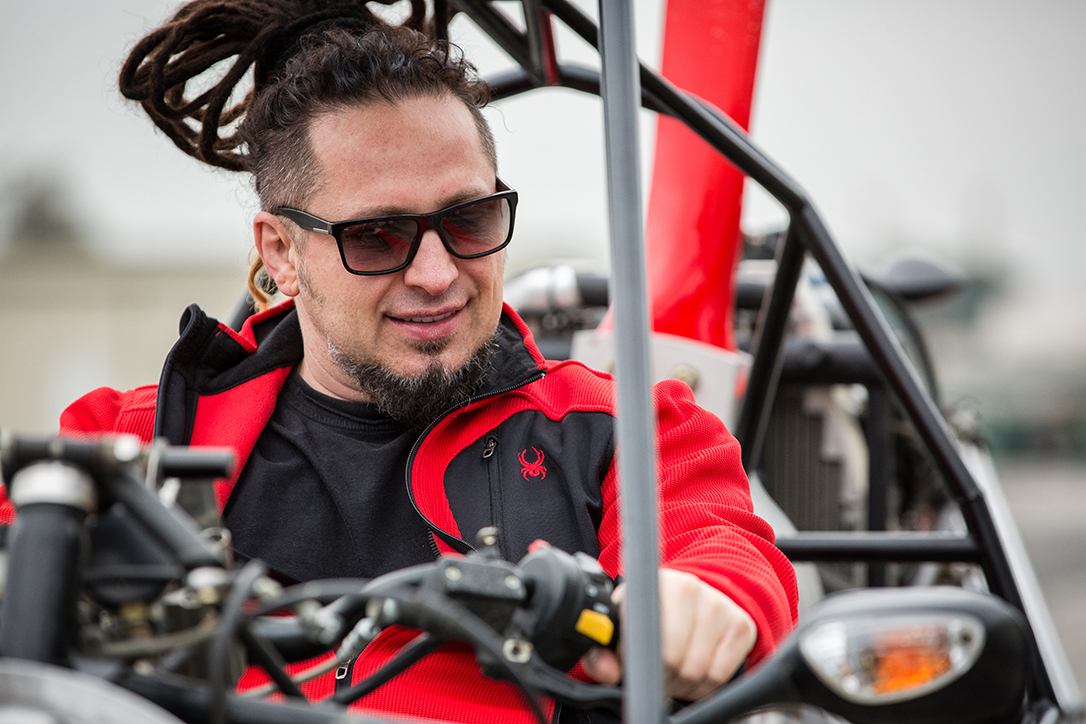
When did you start working on crazy machines?
Dezso Molnar: As a kid, I inhaled books about inventors and scientists. I started using power tools at five. I fixed and raced bicycles and by the age of 12, I crewed for hot air balloons almost daily. At 18, I strapped a jet engine on a trike I welded up in the hallway of a dormitory. By 19, I was building the first private rocket ship designed for manned flight with Robert Truax. In the Air Force I fixed a lot of fighter jets, flew transports, and I later designed science museums. I built robots meant to blow each other up in arenas with Survival Research Labs. By 28, I worked on the Spirit of America land speed car, arguably the fastest ever.
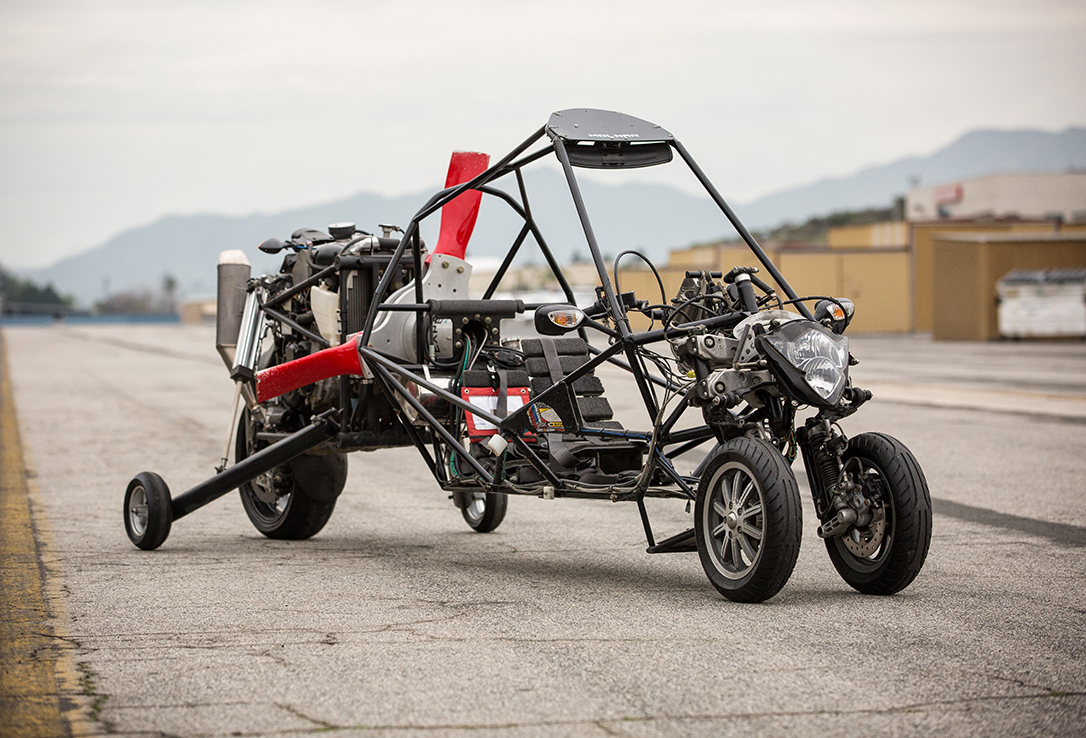
Rumor has it that you built a fully functional flying bike away from prying eyes. Is that true?
DM: Craig Calfee and I built the first GyroCycle at his secluded bicycle shop on Monterey Bay in 2005. We had a magician machinist to help on some key items. I littered the factory with wing struts and rocket parts so nobody could deduce what we were actually making. We road tested on empty local streets, and once the flight controls were assembled I loaded it in a rental truck for a desolate airstrip in Texas. We stopped in Roswell on the way to bless it.
It flew on the first attempt, and over several months we did flights out of public view. The FAA inspector was the only other person I allowed to photograph it. The GyroCycle passed his review, and the FAA issued its blessing and the cycle got its “aircraft license plate” — an “N” number. After the Lone Star flights, it got stashed for several years on the East Coast at a defense contractor’s warehouse until a utility patent was issued for the design. Once protected, I showed it at an airshow in Florida for the first public display.

Why flying bikes and not flying cars?
DM: The stack of rules for designing cars is much larger than what is required for a motorcycle, and street legality is a key requirement if you want to avoid flying in bad weather, to travel to and from airports, etc. Also, motorcycle culture and custom bike builders have made great contributions by fighting to allow creative designs on the street, lane splitting, and letting the rider take responsibility for edgy vehicles.
I design my machines for total commitment to the moment. I do not dumb things down or neuter performance to allow for daydreaming. Cycle culture understands that, and is full of optimistic people who understand the risks of riding and can fill in the gaps with their focus and experience. Those people will have the greatest impact on flying car development.
Do you see GyroCycles having more commercial appeal than flying cars?
DM: Motorcycles are defined as machines with three wheels or less. If you install four wheels, you adopt bumper requirements, child seat regulations, glass windshields — a whole bevy of hoops to jump through. So yes, bikes are the path forward. Also, a motorcycle is your best means of escape on the ground to evacuate a congested city, or from natural disasters like hurricanes. Ferraris and Escalades will be trapped in traffic jams while bikes slip between lanes like London couriers.
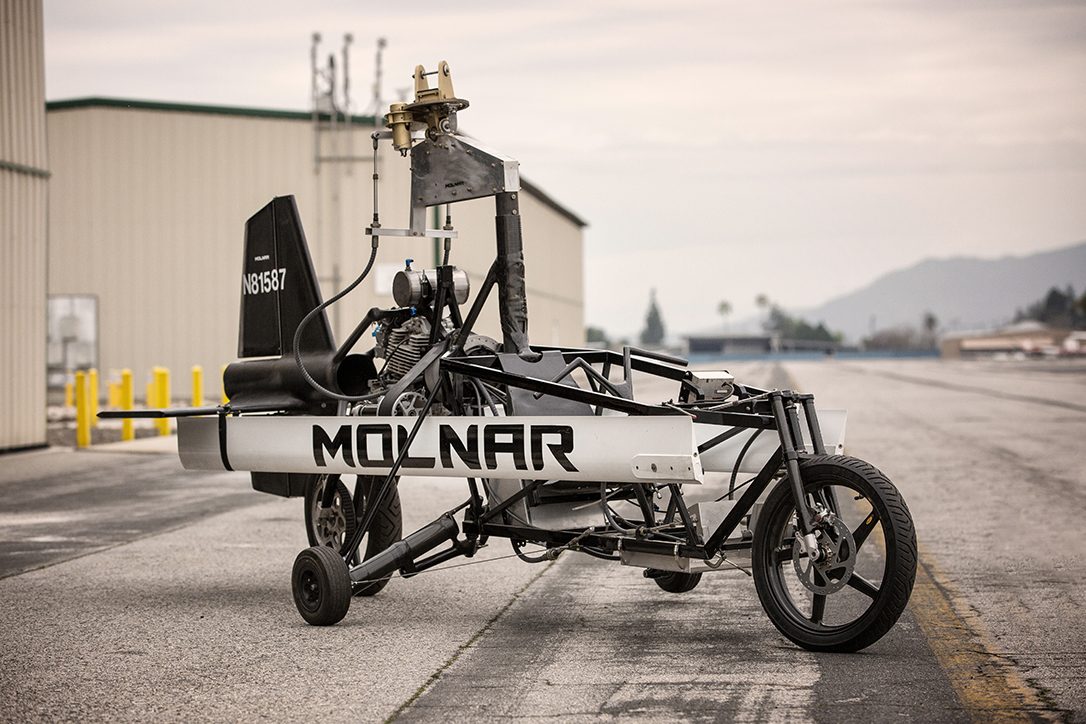
When do you see them commercially available?
Cycles also have a fraction of the frontal area of a car. Most flying car designs over the years have been made two seats wide. They have aircraft engines that could not pass smog checks today with stock auto engines too heavy for flight. New bike engines are race tested, narrow, light and reliable.
My GyroCycle patents were allowed to expire, so I can share the engineering information and drawings with anyone who wants to run with the objective of open-source development.
DM: There will be a natural evolution to turn-key machines. The immediate opportunity for commercial flying cars is in providing the building blocks of street-legal experimental aircraft. Llightweight components that make it easy for people to assemble and improve upon existing designs. I’m talking about kits that do not place a heavy liability on the parts factory. Providing engines, simple transmissions, sub-frames, and lightweight road-tested rolling chassis. Without kits, there would be no IKEA. Kit vehicles hold a prominent and well-defined place in the air and on the road. People will build these machines, refine them and race them.
So is racing in the near future?
DM: Yes. Flying car racing will kick off this year with exhibition racing, perhaps even just against the clock. I have laid out a course between California and Nevada that is safe and challenging and will help further the mission of flying cars becoming legal in the air and on the road.
I am often asked, “When will a flying car be built for the masses and how much will it cost?” No flying cars will be mass-produced until after a small group of engineers hand build, race, crash and fix their own creations. Most years, only 1,000 new propeller aircraft are sold worldwide.
However, on average, every single day at least one more hand-built experimental aircraft gets registered in the US. These typically take an average of five years to build. Racers with that level of skill and commitment will usher in the flying car revolution, not people whining about their commutes.
Electric motors and new fabrication techniques can shave most of the time traditionally required to build an aircraft, so the future is bright. Also, it takes immense skill to finish 14that Indy, or to be the 20thbike to cross the finish line at the Baja 1000. I want to see people move from comparative anonymity in saturated motor sports to top positions as flying car racers for a fraction of their current racing budgets.
How are you going to do this? Who can race? Is there an open invitation?
DM: I am launching “Flying Car Racing” with a defined course through the Mojave Desert. Pilots can fly as low as a Star Wars pod racer, or they can fly high and cautiously on a course over the El Mirage Dry Lake. Once that segment is done, it’s 300 miles on the highway to the finish line in Nevada.
There are three racing categories and the rules are very simple, to promote maximum creativity. The first is drone racing to showcase new designs. The second is the manned electric category, and the third is the manned unlimited category, which accepts all legal vehicles to get things started, and provides for unrestricted improvements and new machines.
Do you think Australia, Africa, or the Middle East will appear on the frontier as the appetite grows, given their long, open distances, barely populated areas, and limited roads and infrastructure?
DM: For experimental aircraft, the US is currently the most liberal place to design and build. In close second is Australia, and likely South Africa third. That said, the opportunity to cross Australia with a solar-charged flying car is tantalizing. Conside the amazing landscape of the outback, and their history with the Solar Car Challenge. Africa could slip past the expense of a road infrastructure the same way they skipped past the installation of phone lines, going straight to cellular. The Maverick flying car was designed specifically for Africa.
Dubai has been the top supporter of fledgling jet pack efforts that include the Martin Jet Pack, Go-Fast, and Yves Rossi’s jet wing. The huge distances and deserts make the best use of flight as an alternative to powering through sand.
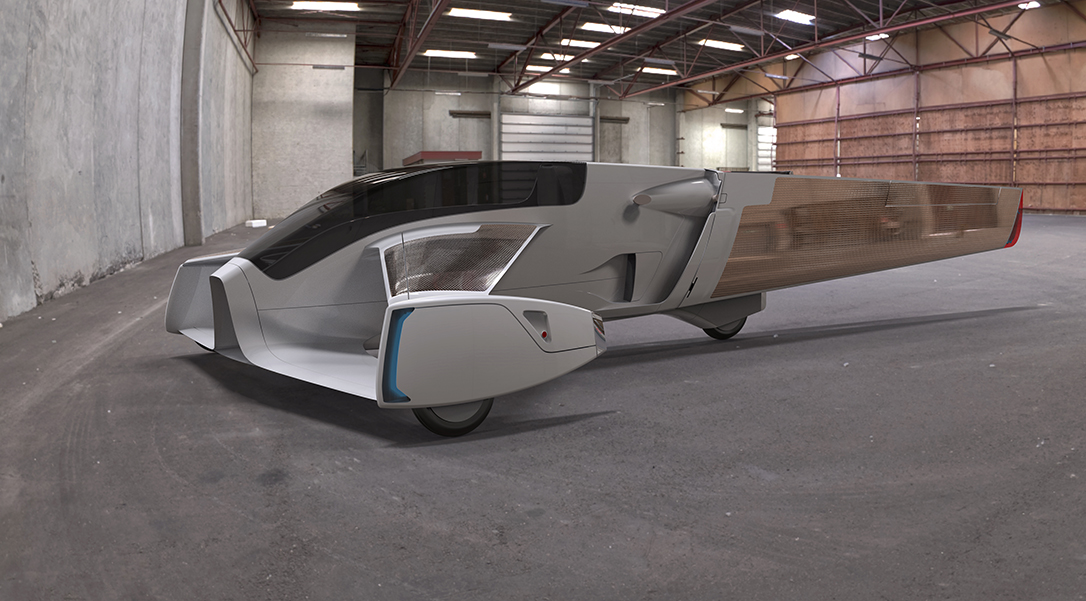
What else do you have in store for us?
DM: Flying is a passion of mine, and will always be a part of what I develop. However, travel in any form is important, and we have created solutions for flight that improve road travel also. We will make a long-range electric cruiser from the current Molnar G2 frame. It will redefine safe and fast enclosed motorcycles. We designed a new sub-frame that will change the odds in a collision to the biker’s advantage.
Sounds like you are building Batman’s bike!
DM: Yes, and I have a separate design I call the Apocacycle that is designed to both instigate and evacuate.
That’s every man’s dream (or at least for the ones with some chest hair)! When can we test drive one?
DM: The electric will be ready this year. Hopefully in time to accompany a 500-mile single-charge bike demonstration with Richard Hatfield. You can ride it then and you will need to fasten the seat belt. We are discussing 260 horsepower.
A 260 horsepower bike? My palms just got sweaty. That sounds crazy! So, if someone built their own and wants to race you, are you up for it? How do they find you?
DM: Most certainly. If you have a flying car, you are already invited. If you know of one in a museum, I suggest you discuss getting it back into operation with the curator. Building one is easy if you limit your objective to single-passenger racing in the air…street-legal motorcycle on the ground. Flight range is not a factor. You can land as often as you need to on the desert floor to refuel. I am predicting five or six vehicles the first year, 20 the second year, and 200 the third. Once we have that base, the races will come fast and furious!
Find me at FlyingCarRacing.com and have your helmet ready.






















